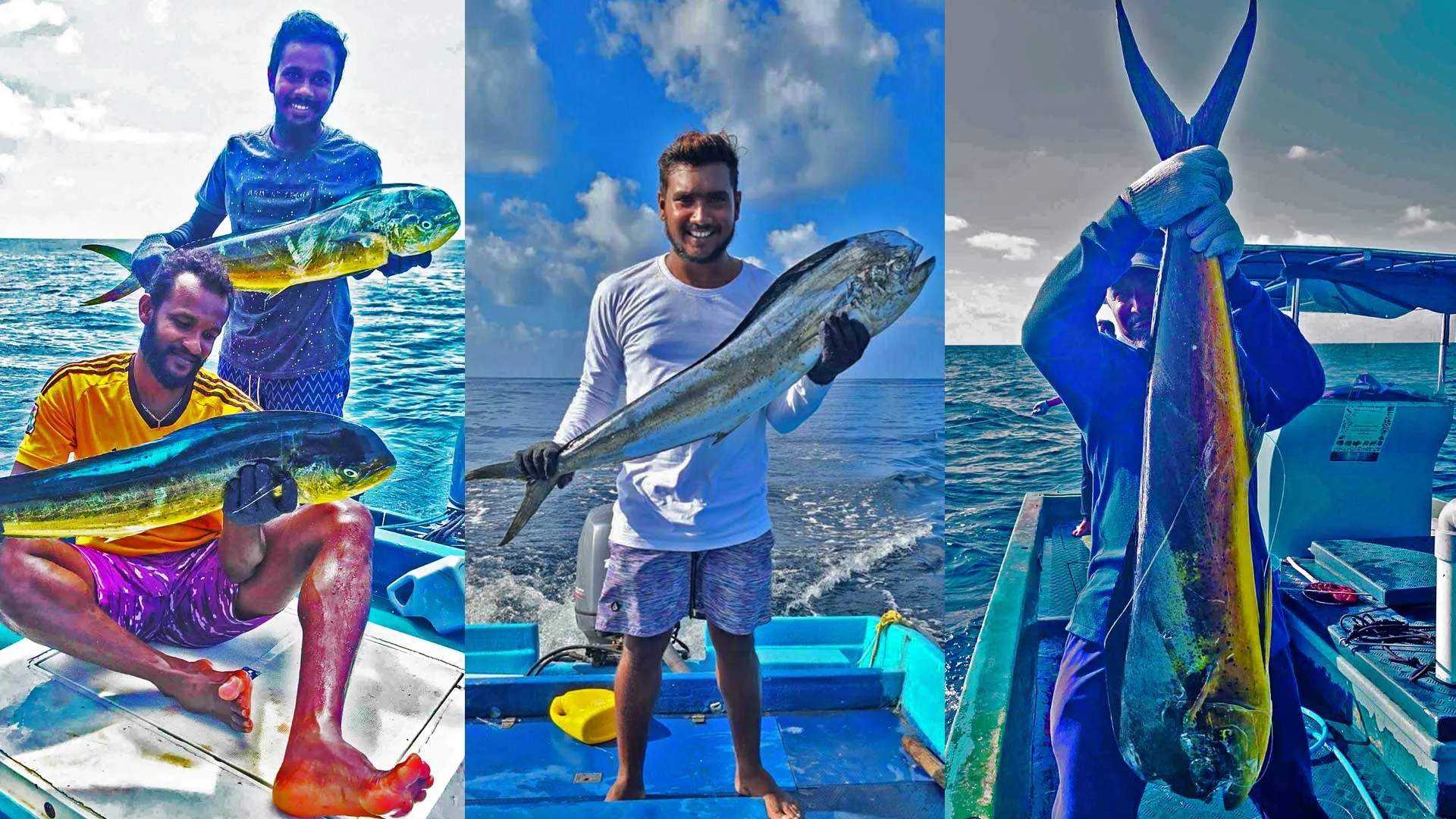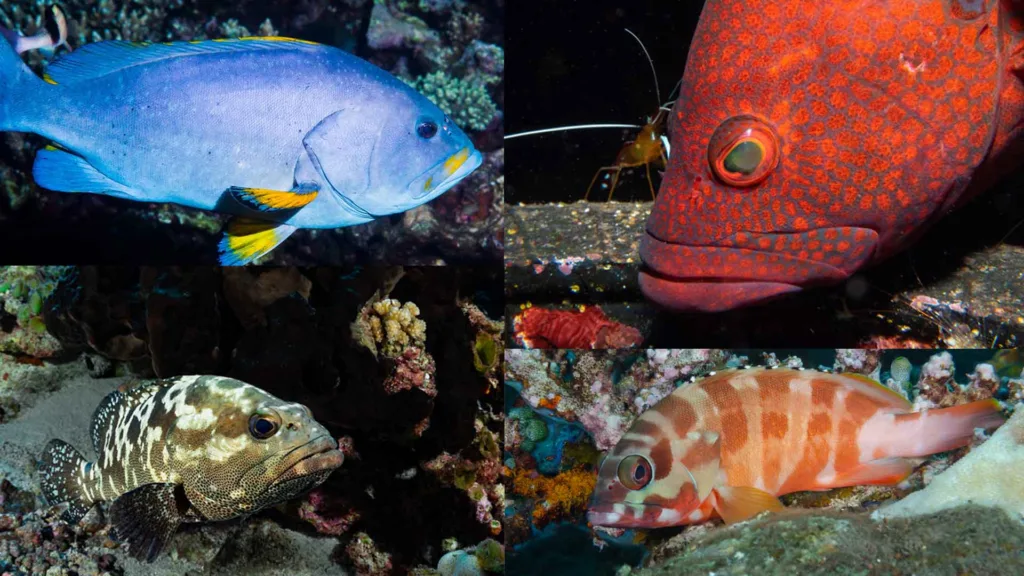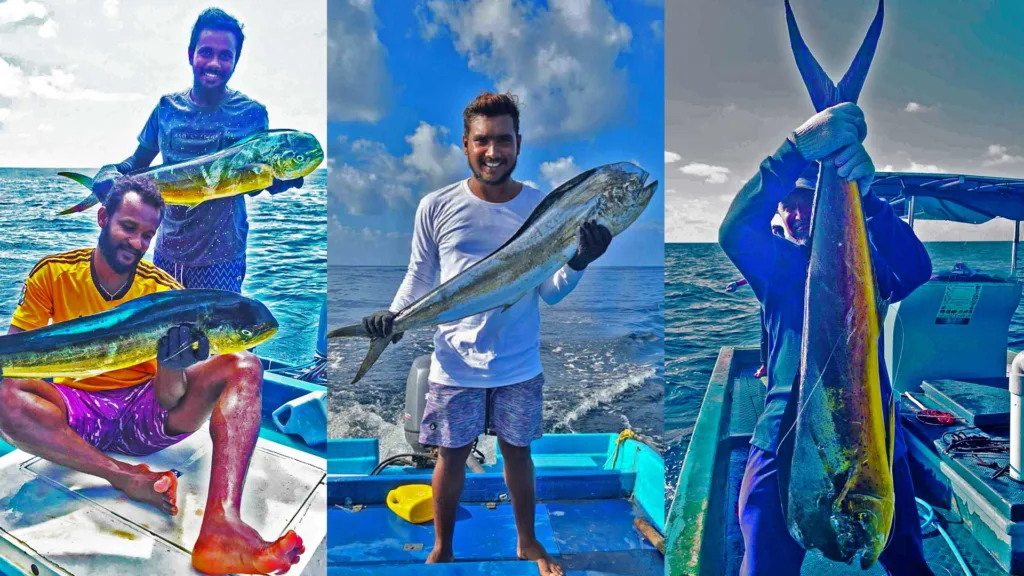
Dorado, or mahi-mahi (Coryphaena hippurus), is a popular fish in the Maldives. It is also known as the dolphin fish. This fish is abundant in the Maldivian ocean. The southern regions of the Maldives, particularly Fuvahmulah Island, are one of the most spectacular areas where this fish is active, due to the occurrence of flying fish phenomena in Fuvahmulah’s sea.
During the southwest monsoon (locally known as “hulhangu moosum”), the sea of Fuvahmulah is teeming with marine life, ranging from tiny species to large predators like yellowfin tuna, wahoo, and sailfish. Most importantly, the sea surrounding Fuvahmulah is inundated with thousands of flying fish. Flying fish can be seen leaping out of the water by the thousands. They glide in different directions due to predators beneath the deep ocean’s surface.
Yellowfin tuna, wahoo, tuna, and sailfish hunt these large schools of flying fish in the upper water columns. Mahi mahi, however, is the most interesting predator that preys on and chases flying fish. They are quick and dynamic. When these animals hunt flying fish below the water, the beautiful frigate birds fly over the water at lower levels to look at the fish. If the dorado is unable to swallow the flying fish that are leaping, it will pursue them just below the surface and occasionally above. It continues its dynamic hunting path until the flying fish lands on water. If the frigate bird fails to scope the flying fish, the fish will land on the water and swim away. But the stealthy dorado waits for the flying fish and devours it whole.
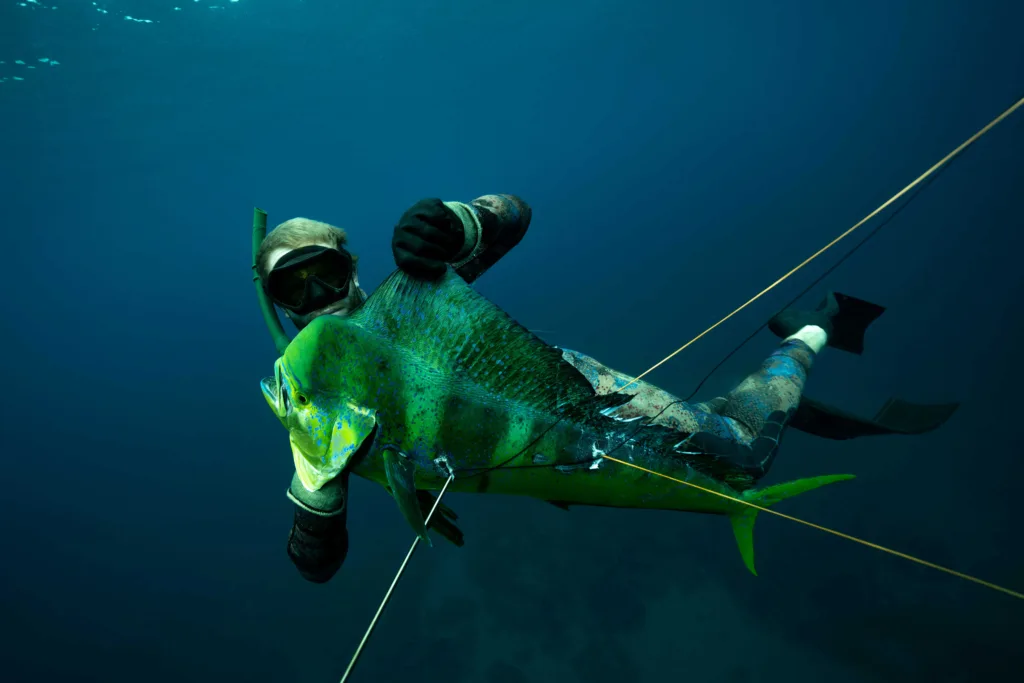
Along with the yellowfin tuna, which jumps out like a dolphin, this group of predatory fish puts on a spectacular show. However, the dorado has an explosive burst speed. They can be seen remaining stationary before suddenly bursting over short distances after the flying fish. When in a frenzy, they can reach high speeds and skim the surface. Mahi mahi charge flying fish upward at very steep angles, which is one of their most spectacular behaviors. They are so clever that they follow the flight path of the flying fish. During their steep charge, they can be seen jumping out of the water.
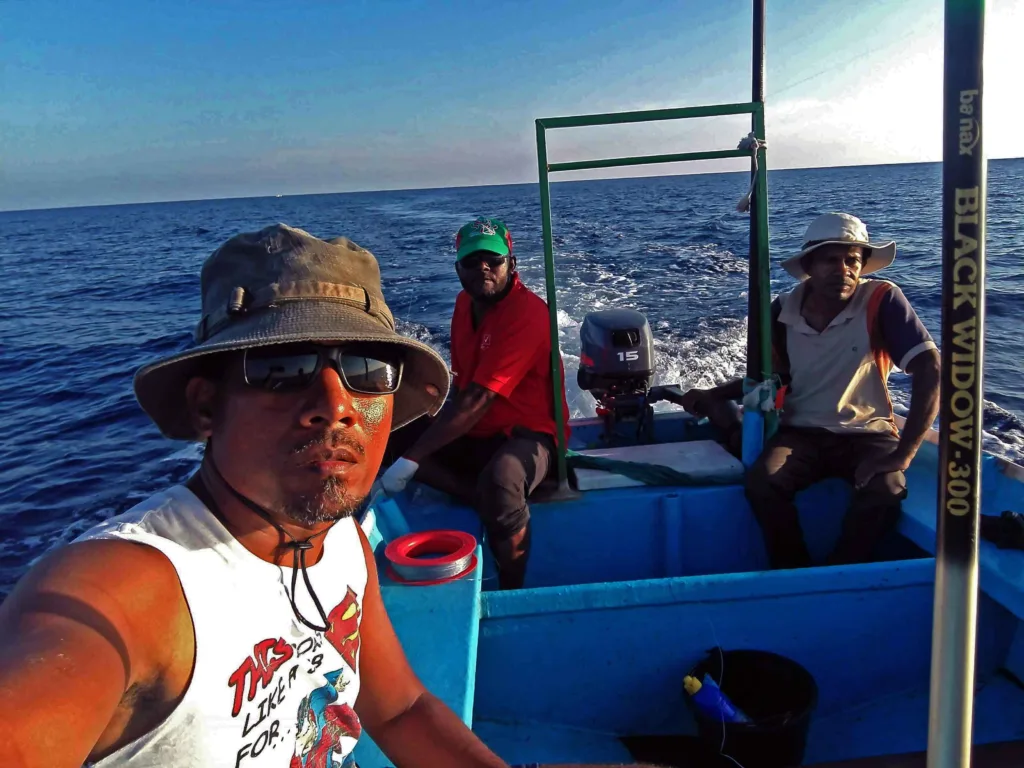
We witness this craze firsthand while fishing for yellowfin tuna aboard boats. And we don’t need to send the bait down to catch them. They will charge at the cut fish and swim away at high speed. They are also seen swimming quickly, with rapid tail beats and lateral body bends, chasing flying fish. Large mahi mahi are typically seen in pairs or small groups. However, smaller ones come from schools. These schools drive the flying fish upward. Mahi mahi relentlessly pursue flying fish, staying directly under them in flight, and strike when the fish re-enter the water. As the flying fish lands on the water, dorado rush in, accelerate, and engulf the prey. If their hunger is not satisfied, they resume their extraordinary dynamic hunting techniques.
From the shore, you might catch glimpses of the dorado’s hunting prowess as they chase flying fish—but the true spectacle remains hidden from casual onlookers. Only from a fishing vessel can you witness the full spectacle: the sea erupts with flashes of iridescent blue and green as these high-speed predator’s strike. When anglers use live bait or dead flying fish on the fishing line, they can feel the dorado’s raw power through the monofilament line. The fish can suddenly accelerate, change direction, and leap out of the water. Even the most experienced fishermen are left speechless by the heart-pounding display of skill, speed, and raw power displayed in every strike. During the monsoon season, when the sea comes alive with swarms of flying fish, we pursue the magnificent mahi mahi — a vibrant ocean predator and an unforgettable delicacy on the table.
